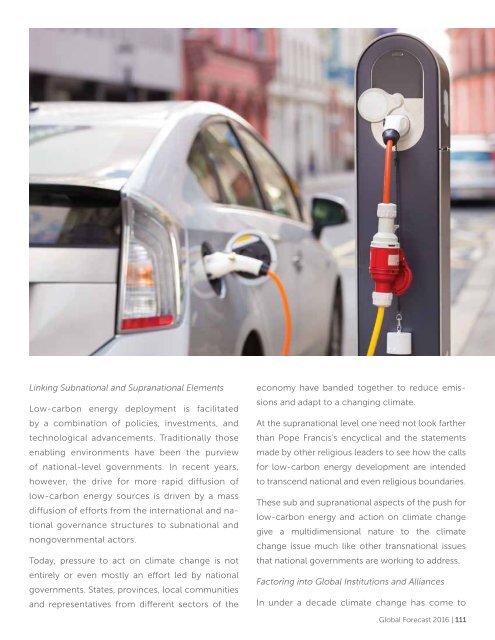Create successful ePaper yourself
Turn your PDF publications into a flip-book with our unique Google optimized e-Paper software.
Linking Subnational and Supranational Elements<br />
Low-carbon energy deployment is facilitated<br />
by a combination of policies, investments, and<br />
technological advancements. Traditionally those<br />
enabling environments have been the purview<br />
of national-level governments. In recent years,<br />
however, the drive for more rapid diffusion of<br />
low-carbon energy sources is driven by a mass<br />
diffusion of efforts from the international and national<br />
governance structures to subnational and<br />
nongovernmental actors.<br />
Today, pressure to act on climate change is not<br />
entirely or even mostly an effort led by national<br />
governments. States, provinces, local communities<br />
and representatives from different sectors of the<br />
economy have banded together to reduce emissions<br />
and adapt to a changing climate.<br />
At the supranational level one need not look farther<br />
than Pope Francis’s encyclical and the statements<br />
made by other religious leaders to see how the calls<br />
for low-carbon energy development are intended<br />
to transcend national and even religious boundaries.<br />
These sub and supranational aspects of the push for<br />
low-carbon energy and action on climate change<br />
give a multidimensional nature to the climate<br />
change issue much like other transnational issues<br />
that national governments are working to address.<br />
Factoring into Global Institutions and Alliances<br />
In under a decade climate change has come to<br />
Global Forecast 2016 | 111


